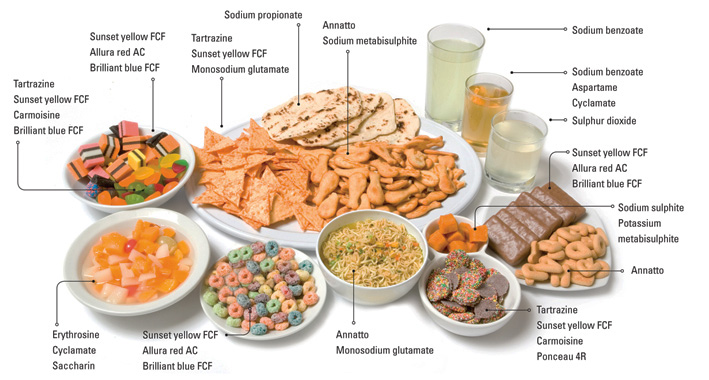The U.S. Food and Drug Administration (FDA) regulates the use of food additives like preservatives, colors, sweeteners, fat replacers, emulsifiers and other ingredients added to food to maintain or improve safety, freshness, nutritional value, taste, texture and appearance. Food additives can be direct (those added for a specific purpose) or indirect (those added in trace amounts due to packaging, storage or handling) and are determined safe for market use only after stringent FDA review.
Due to the FDA’s regulation of food additives, most people assume that if a food is on grocery store shelves, it must be 100 percent safe for human consumption. Unfortunately, this isn’t always the case. As the FDA states: “Because of inherent limitations of science, FDA can never be absolutely certain of the absence of any risk from the use of any substance.” In fact, several food additives approved for use in the U.S. by the FDA are banned in other parts of the world.
So if you think everything in your pantry is safe to eat, think again. Here are 6 common food additives found in the U.S. that are banned in other countries.
Azodicarbonamide (ADA)
- Use: whitening or bleaching agent for cereal flour and as a dough conditioner in baking; also used to make rubber products like yoga mats and shoe soles
- Concerns: During baking ADA breaks down to form new chemicals, one of which, semicarbizide (SEM), is known to increase the incidence of tumors in lab rats.
- Banned: European Union

